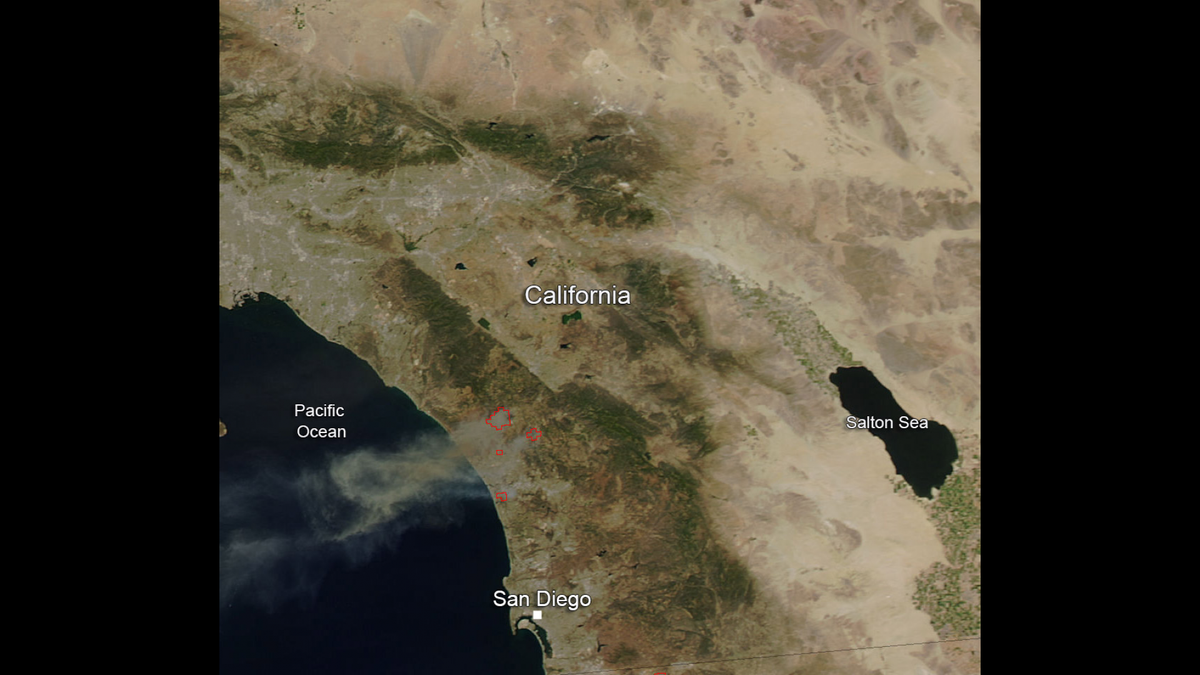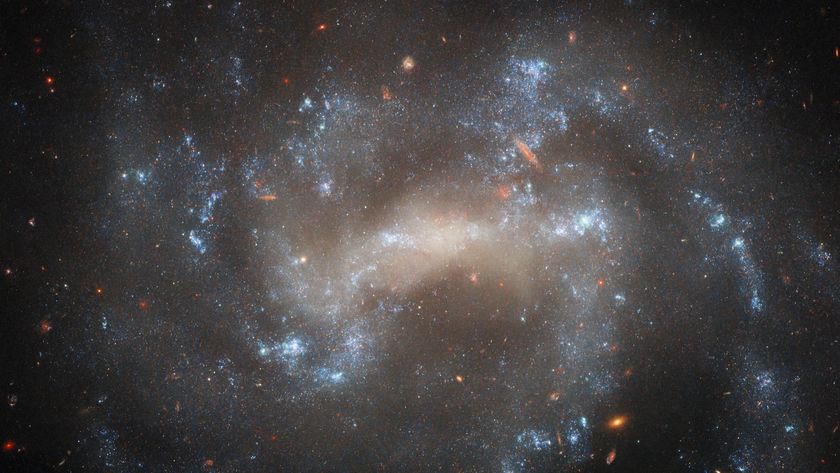Smoke Plumes from California Fires Visible from Space (Photo)

Smoke from wildfires raging in Southern California can be seen from space.
In this satellite image, captured by NASA's Earth-watching Aqua spacecraft on Wednesday (May 14), sandy-colored plumes stretch out over the Pacific Ocean from San Diego County, where firefighters are battling intense blazes.
The fire started Wednesday just north of San Diego, fueled by dry conditions, gusty winds and temperatures over 100 degrees Fahrenheit (37 degrees Celsius).
The blaze split into several separate fires that have burned nearly 16 square miles (41 square kilometers), CNN reported. Firefighters were attempting to control three dozen fires overnight, but as of this morning (May 15), they were facing eight, according to CNN.
The fires have prompted road closures and evacuation orders for thousands of residents in the region, while damage to power lines caused widespread outages. Evacuation orders were in effect in locations ranging from residential neighborhoods to the Marine Corps' base at Camp Pendleton to the amusement park Legoland, where all rides had to be evacuated Wednesday before the park reopened today.
Much of the firefighting efforts are focused on an 1.3-square-mile (3.2 square kilometers) fire in the city of San Marcos, where at least three homes have been destroyed, city officials said. At least 380 fire personnel and 84 engines were responding to the fire. California Gov. Jerry Brown declared a state of emergency and authorized the deployment of 12 aircraft to help combat the blazes. California State University San Marcos will also remain closed for the rest of the week, campus officials said.
The extreme weather even spawned a phenomenon known as a fire tornado, as video footage sent in to local news stations shows. (The skinny flame-filled whirlwind is actually more similar to a dust devil than a tornado.)
Sign up for the Live Science daily newsletter now
Get the world’s most fascinating discoveries delivered straight to your inbox.
Follow Megan Gannon on Twitter and Google+. Follow us @livescience, Facebook & Google+. Original article on Live Science.












